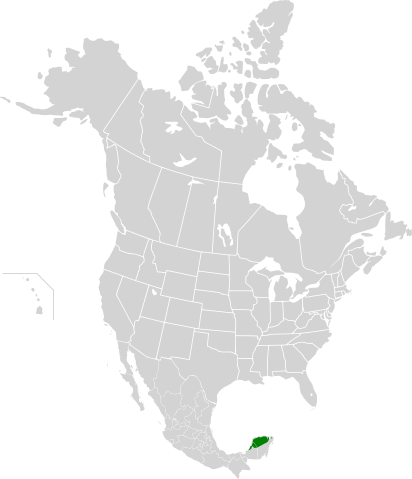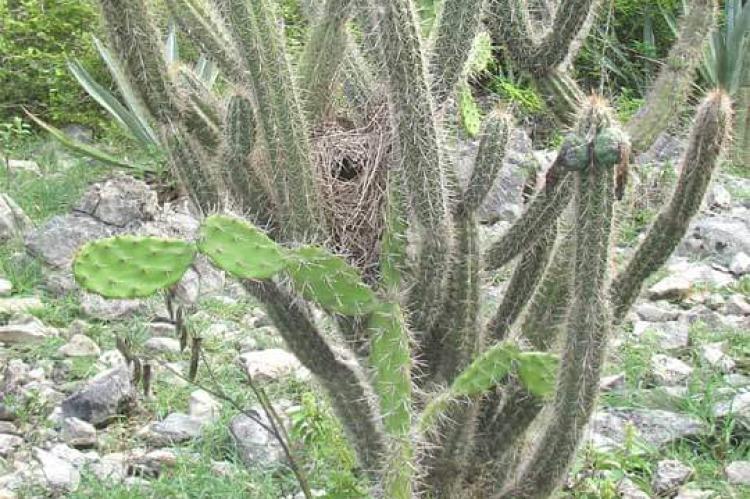The Yucatán Dry Forests: A Unique Island of Biodiversity on Mexico's Limestone Peninsula
The Yucatán Peninsula is home to the Yucatán dry forests, an isolated ecosystem with unique plant and animal species adapted to the environment. The flat terrain, thorny scrub vegetation, and scattered cacti offer a glimpse into a world shaped by aridity and limestone formations.
The Yucatán Dry Forests: A Unique Island of Biodiversity on Mexico's Limestone Peninsula
The Yucatán Peninsula, a vast limestone plateau that juts out into the Gulf of Mexico, is home to a remarkable and unique ecosystem – the Yucatán dry forests. This ecoregion, isolated from other dry forests by the surrounding seas and the vast moist forests of the Maya region, is a veritable island of vegetation, harboring an array of endemic plant and animal species adapted to the region's distinct climate and geology. With its flat terrain, thorny scrub vegetation, and scattered cacti, the Yucatán dry forests offer a glimpse into a world shaped by the interplay of aridity, limestone formations, and evolutionary isolation.
Geographical Setting and Climate
Topography and Geology
The Yucatán dry forests ecoregion is situated in the northwestern section of the Yucatán Peninsula. It encompasses a vast expanse of flat terrain with an elevation below 400 meters (1,300 feet) above sea level. The region's geological foundation is limestone of coralline origin, a testament to the area's ancient marine past.
Soil Characteristics
The soils in the Yucatán dry forests are generally young and of calcareous origin, characterized by extensive drainage and a rarity of flooding events. This well-drained soil profile plays a crucial role in shaping the vegetation and ecological dynamics of the ecoregion.
Climate and Precipitation
The climate in the Yucatán dry forests is tropical and subhumid, with a pronounced dry season that influences the deciduous nature of the forests. However, the central portion of the region experiences even drier conditions. Annual precipitation levels rarely exceed 1,200 mm (47 inches), with a long dry season typical of subtropical forests.
Vegetation and Flora
Dominant Plant Species
The central portion of the Yucatán dry forests is dominated by tamarind (Lysiloma bahamensis) and jabín (Piscidia piscipula), often accompanied by species such as Alvaradoa amorphoides, Bursera simaruba, Cedrela mexicana, Chlorophora tinctoria, Cordia gerascanthus, and Lonchocarpus rugosus in other areas.
Additional accompanying species include Vitex gaumeri, Brosimum alicastrum, Caesalpinia gaumeri, Cedrela odorata, Ceiba pentandra, and Sideroxylon fuetidissimum.
Cacti and Coastal Vegetation
Cacti become more abundant as one moves closer to the coast in the northern part of the ecoregion. Common cactus species in this area include Cephalocereus gaumeri, Pterocereus gaumeri, and Lemaireocereus griseus.
Endemic Flora and Biodiversity
The Yucatán dry forests are known for their high level of plant endemism, with nearly 10% of the total vegetation estimated to be endemic to the region. In the northern portion, where cacti thrive, 10 of the 14 endemic cacti species of the Yucatán Peninsula can be found.
Herbaceous plants, epiphytes, and fungi are relatively scarce in this ecoregion, although bromeliads like Tillandsia can grow on some trees.
Fauna and Wildlife
Endemism and Isolation
Some researchers hypothesize that the ecoregion's isolation from other dry forests is responsible for the unique composition of its flora and fauna and the specific processes governing animal and plant dispersal. Many species cannot survive or readily disperse into the surrounding ecoregions, leading to localized distributions and high numbers of endemic species.
Reptiles and Amphibians
The Yucatán dry forests are considered one of Mexico's richest regions in terms of its herpetofauna, housing many endemic amphibians and reptiles. It is one of the few places in Mexico where the black-beaded lizard (Heloderma horridum), one of only two venomous lizard species, can be found.
Avian Diversity
The ecoregion is home to over 290 bird species, including two endemics. Notable avian residents include Swainson's warbler (Limnothlypis swainsonii), the yellow-lored (Yucatán) parrot (Amazona albifrons), the lesser yellow-headed vulture (Cathartes burrovianus), and the hooded warbler (Wilsenia citriha).
Mammalian Fauna
Approximately 96 mammal species inhabit the Yucatán dry forests, including the White-nosed coatí (Nasua narica), jaguar (Pantera onca), spider monkey (Ateles geoffroyi), and southern opossum (Didelphis marsupialis).
Conservation and Protection Status
Despite their ecological significance and unique biodiversity, the Yucatán dry forests have been extensively cleared for cattle ranching, agriculture, and henequén plantations. Only a small percentage of the region is protected, with the Ría Lagartos Biosphere Reserve, Los Petenes Biosphere Reserve, and several state reserves serving as conservation areas for this threatened ecosystem.

Map illustrating the approximate location of the Yucatán dry forests (in green).
